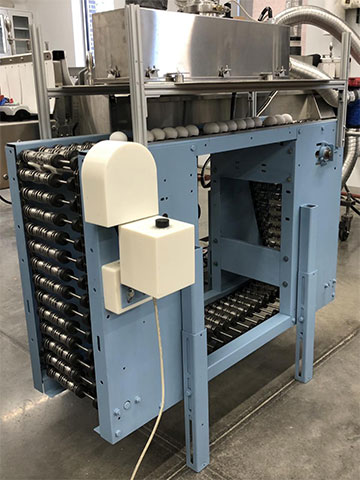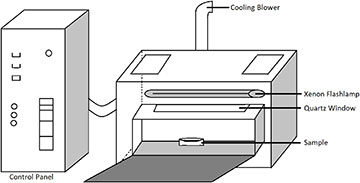![]()
Joshua Cassar led a team that explored the use of pulsed light to kill pathogens in food production. [Image: Penn State/Creative Commons]
The food industry has long used low-intensity UV light to kill potentially dangerous microbes. Now, researchers from the Pennsylvania State University, USA, are proposing a new technology that uses high-intensity pulsed UV light to quickly eliminate pathogens as a food item travels along a conveyor belt (J. Food Eng., doi: 10.1016/j.jfoodeng.2022.111152). The pulsed-light method could replace the low-intensity UV light method, which requires long periods of exposure to kill microbes, and serve as an alternative to other commonly used chemical-, heat- and water-based food sanitation techniques when used in an appropriate setting.
“As with any novel technology,” said first author Joshua R. Cassar in a press release, “[our technology] will continue to develop and hopefully will provide us with an effective and efficient tool for sanitation in a range of environments and industries.”
Measuring microbial sensitivity to pulsed light
Schematic of the pulsed-light benchtop system used by researchers at Pennsylvania State University to kill harmful foodborne pathogens like E. coli and Salmonella. [Image: J.R. Cassar et al., J. Food Eng., doi: 10.1016/j.jfoodeng.2022.111152 (2022); with permission from Elsevier] [Enlarge image]
Ali Demirci and his Penn State colleagues used a benchtop pulsed-light system with three 16-inch xenon flashlamps for their demonstrations. Each bulb provided different wavelengths of light: lamp A, 380–1100 nm; lamp B, 235–1100 nm; and lamp C, 190–1100 nm. The system produced three light pulses per second with a pulse width of 360 µs. Prior to the microbe demonstrations, the researchers recorded energy values and spectral traces for each of the flashlamps.
To determine germicidal response, the researchers treated a selection of common foodborne microbes—including bacteria with different cell-wall structures (Gram-positive or Gram-negative)—with up to 15 broad-spectrum pulses from each of the three flashlamps. The microbe species included Escherichia coli, Salmonella Typhimurium, Listeria monocytogenes, Bacillus cereus, Aspergillus niger and Penicillium roqueforti.
Demirci’s team found that the Gram-negative bacteria (E. coli and S. Typhimurium) appeared to have a greater sensitivity to pulsed light than the Gram-positive bacteria (L. monocytogenes and B. cereus). They also observed that both the Gram-negative and Gram-positive bacteria were more sensitive to pulsed light than the fungal spores and bacterial endospores (A. niger and P. roqueforti).
Additionally, the researchers treated E. coli cultures with pulsed light from lamp B outfitted with a UV-blocking filter to deliver pulses in the visible (VIS; 380–740 nm), near-infrared (NIR; 700–1080 nm) and VIS-NIR (400–1080 nm) spectra. For all three spectra, the researchers observed modest reductions in live E. coli cells after 75 UV-free pulses. The researchers also confirmed with transmission electron microscopy that there was only negligible damage to cell morphology after UV-free pulsed light treatment.

A novel egg conveyor that the researchers designed for their prior experiment. As the eggs rotate on their long axis along the way, the entire surface of the eggshell is exposed to pulsed UV light. [Image: Courtesy of J. Casser, Penn State]
Next steps
Results from the broad-spectrum and UV-free demonstrations led the team to conclude that germicidal response to pulsed light varies by microbe species and is predominantly attributed to the UV portion of the spectrum.
The team’s future research will focus on characterizing more microorganisms’ responses to pulsed-light treatment and increasing the relative inclusion of the UV spectrum while reducing the VIS and NIR spectra in forthcoming pulsed-light experiments.
The researchers hope that their pulsed-light technology will soon be adopted by the food industry because of its potential to improve food safety. In a previous study, the researchers, with two other colleagues, created a prototype of a commercial-scale device using a conveyor belt with xenon flashlamps to test the technology on eggs, demonstrating its possible use in an industrial setting.

